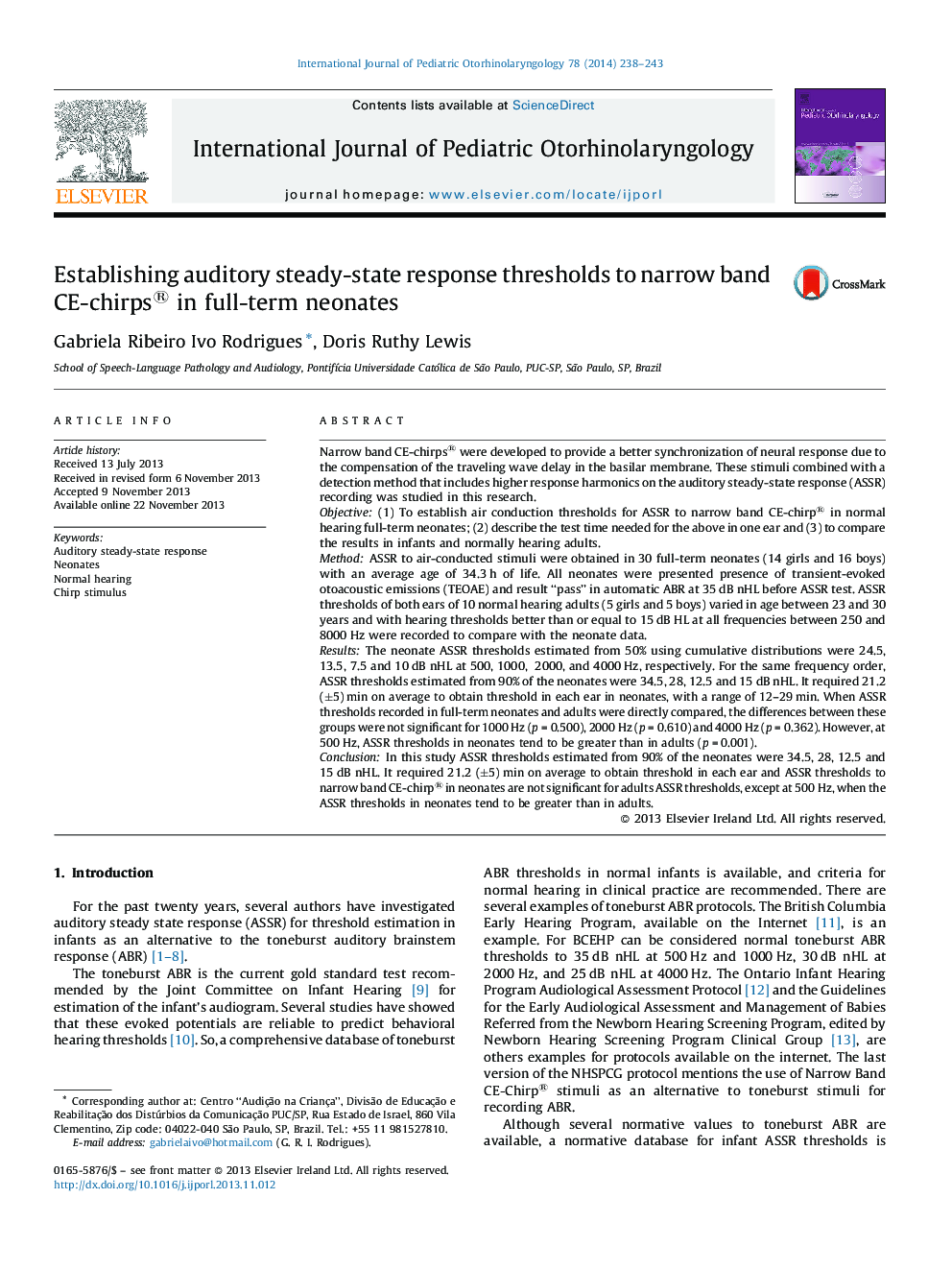| کد مقاله | کد نشریه | سال انتشار | مقاله انگلیسی | نسخه تمام متن |
|---|---|---|---|---|
| 6213812 | 1606011 | 2014 | 6 صفحه PDF | دانلود رایگان |

Narrow band CE-chirps® were developed to provide a better synchronization of neural response due to the compensation of the traveling wave delay in the basilar membrane. These stimuli combined with a detection method that includes higher response harmonics on the auditory steady-state response (ASSR) recording was studied in this research.Objective(1) To establish air conduction thresholds for ASSR to narrow band CE-chirp® in normal hearing full-term neonates; (2) describe the test time needed for the above in one ear and (3) to compare the results in infants and normally hearing adults.MethodASSR to air-conducted stimuli were obtained in 30 full-term neonates (14 girls and 16 boys) with an average age of 34.3 h of life. All neonates were presented presence of transient-evoked otoacoustic emissions (TEOAE) and result “pass” in automatic ABR at 35 dB nHL before ASSR test. ASSR thresholds of both ears of 10 normal hearing adults (5 girls and 5 boys) varied in age between 23 and 30 years and with hearing thresholds better than or equal to 15 dB HL at all frequencies between 250 and 8000 Hz were recorded to compare with the neonate data.ResultsThe neonate ASSR thresholds estimated from 50% using cumulative distributions were 24.5, 13.5, 7.5 and 10 dB nHL at 500, 1000, 2000, and 4000 Hz, respectively. For the same frequency order, ASSR thresholds estimated from 90% of the neonates were 34.5, 28, 12.5 and 15 dB nHL. It required 21.2 (±5) min on average to obtain threshold in each ear in neonates, with a range of 12-29 min. When ASSR thresholds recorded in full-term neonates and adults were directly compared, the differences between these groups were not significant for 1000 Hz (p = 0.500), 2000 Hz (p = 0.610) and 4000 Hz (p = 0.362). However, at 500 Hz, ASSR thresholds in neonates tend to be greater than in adults (p = 0.001).ConclusionIn this study ASSR thresholds estimated from 90% of the neonates were 34.5, 28, 12.5 and 15 dB nHL. It required 21.2 (±5) min on average to obtain threshold in each ear and ASSR thresholds to narrow band CE-chirp® in neonates are not significant for adults ASSR thresholds, except at 500 Hz, when the ASSR thresholds in neonates tend to be greater than in adults.
Journal: International Journal of Pediatric Otorhinolaryngology - Volume 78, Issue 2, February 2014, Pages 238-243